#blackhawk museum
Explore tagged Tumblr posts
Text
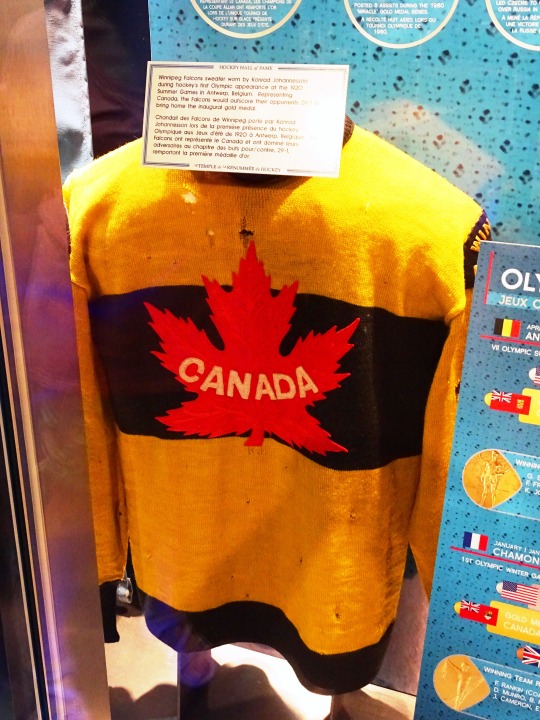


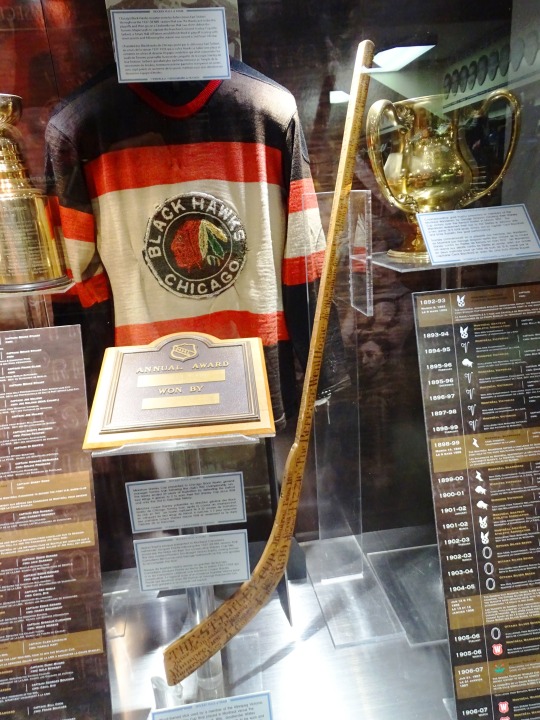

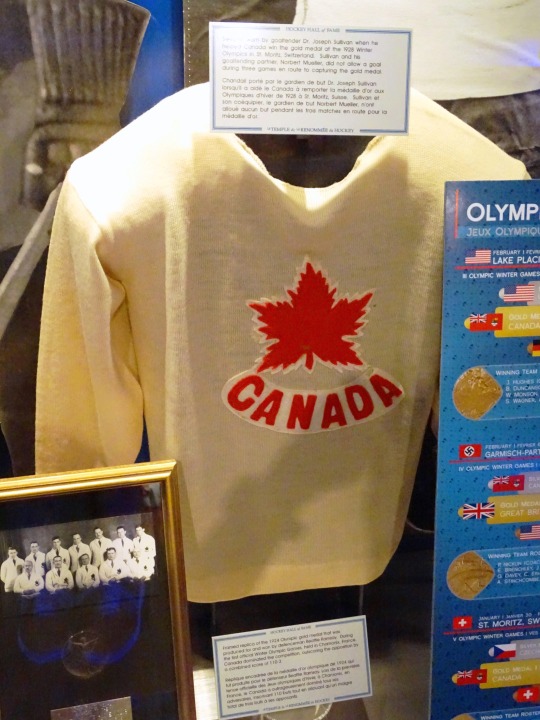

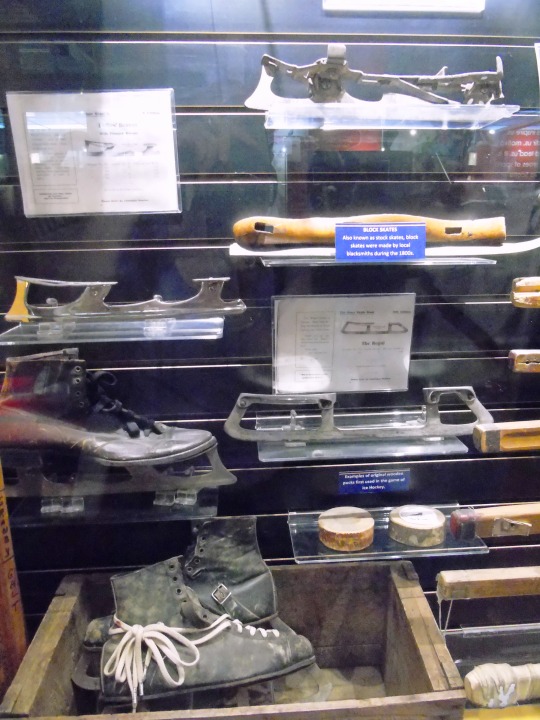
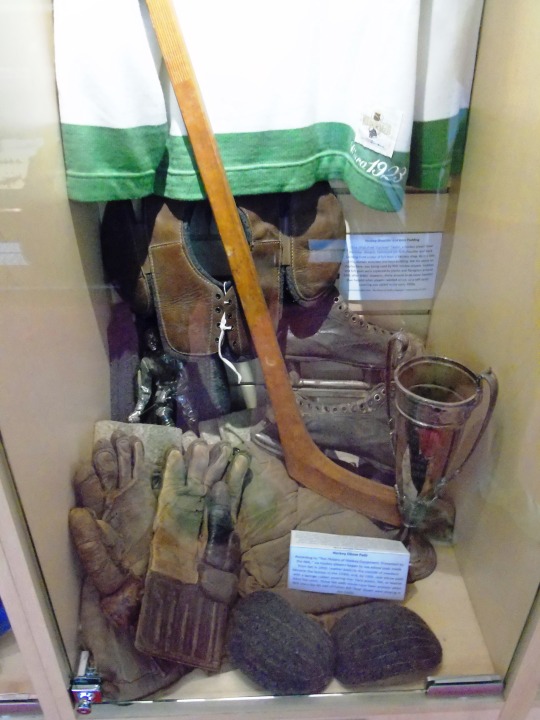
Ice hockey was introduced to the Olympic Games at the 1920 Summer Olympics in Antwerp. The tournament also served as the 1st World Championships. The matches were played between April 23 and April 29, 1920. Canada was represented by the Winnipeg Falcons.
#hockey#introduced#1920 Summer Olympics#23 April 1920#anniversary#Canadian history#Winnipeg Falcons jersey#stick#skates#puck#old stuff#International Hockey Hall of Fame#Toronto#Ontario#summer 2018#travel#Nova Scotia Sport Hall Of Fame#Nova Scotia#Halifax#2015#vacation#tourist attraction#landmark#museum#Chicago Blackhawks#Toronto St. Patricks#original photography#Games of the VII Olympiad#Canada
3 notes
·
View notes
Text
Through Mamie's Eyes
Recently I visited the Dwight D. Eisenhower Presidential Library, Museum and Boyhood Home. Curator William Snyder provided us with a tour. I loved learning the Eisenhower story through Mamie’s eyes. William Snyder curator of the museum provided our tour. We saw the boyhood house where President Eisenhower grew up, then we toured the library and museum, plus, we viewed the memorial where he and…
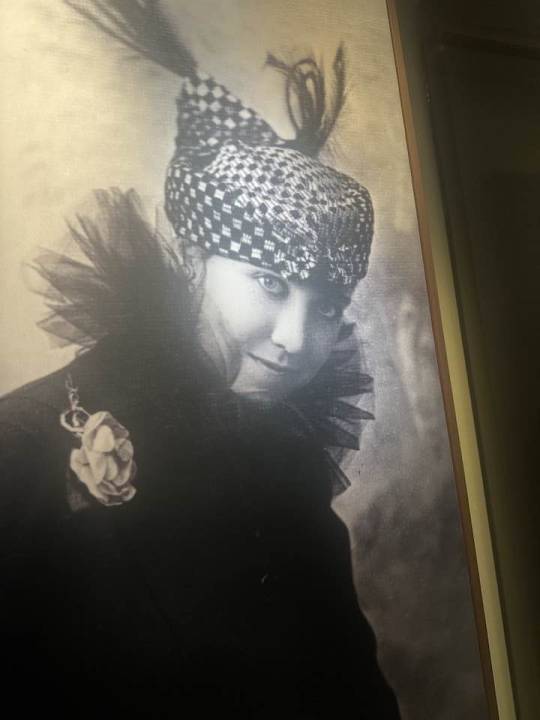
View On WordPress
#"Icky" Eisenhower#34th President of the United States#Abilene#Atomic Energy Agency#Belle Springs Creamery#Blackhawk Cocshutt tractor#campaign#Cold War#Colorado#Columbia University#cowboy trail#curator#Denver#Doud Eisenhower#Dwight D. Eisenhowere Presidential Library Museum and Boyhood Home#Eda Mae Doud#Eisenhower#Eisenhower trail#Eleanor Carlson Doud#Elivera Mathilda Carlson#Gettysburg#highway system#Ida Eisenhower#inaguration#John Sheldon Doud#Kansas boy#Mamie bangs#Mamie Eisenhower#memoiral#military journey
0 notes
Text


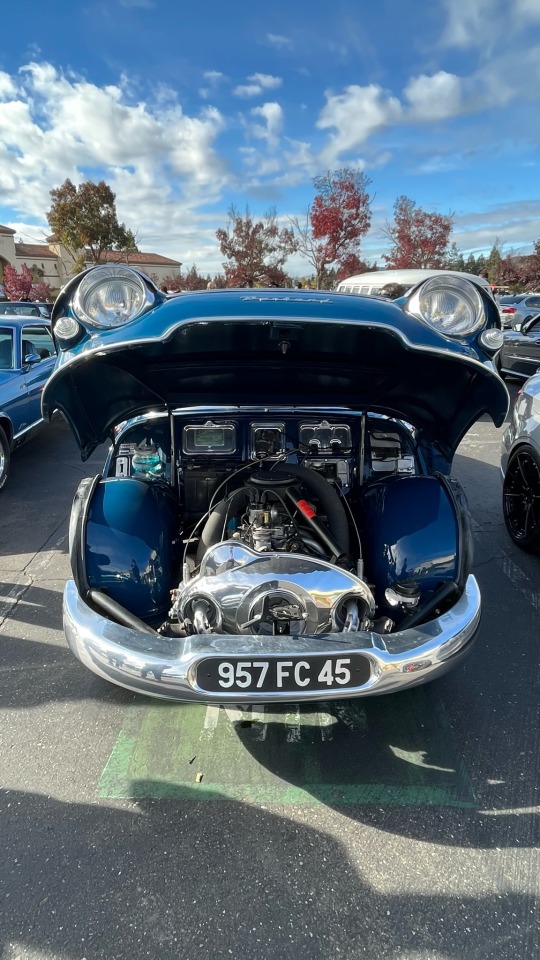
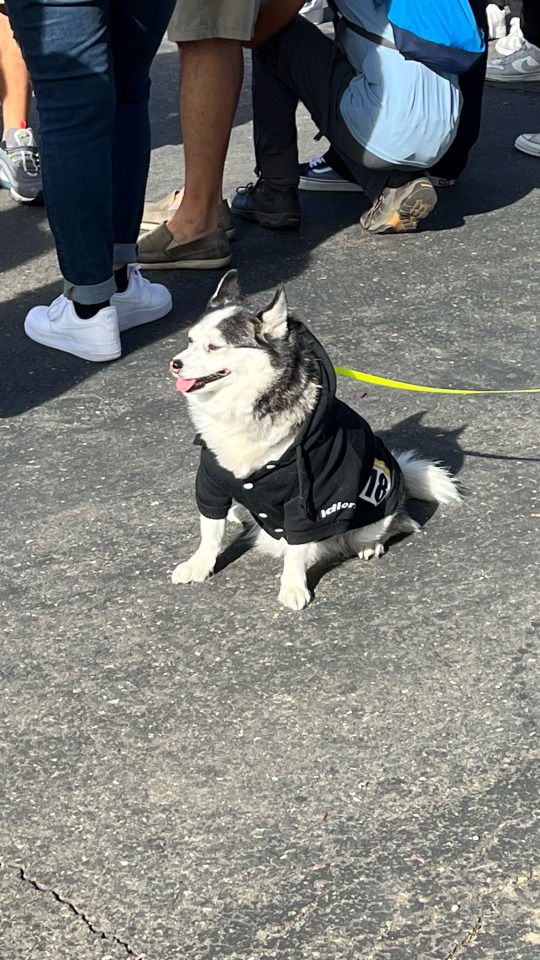





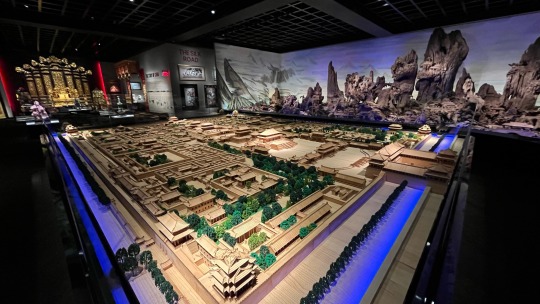
10/14/23 - Blackhawk Museum / C&C
#I haven’t been blown away by a museum in a long time#but man did they update the Blackhawk#Insane#it felt like some mega rich whiteguy just went bananas#western stuff Chinese stuff car stuff taxidermy stuff#on that note I honestly got a little hibbie jeebie in the taxidermy section to the point where I didn’t take pics#it smelled like formaldehyde….#the animals were packed in so tightly too#vibes were OFF#not a fan…#but everything else was insanely cool and so electric#I want a museum when I retire#also the dog was cooler than me
1 note
·
View note
Note
Hi Sarah, I'm going to visit Chicago in a couple of weeks and when I think of Chicago I think of you. What would you recommend I visit/do?
Unfortunately, Chicago is not its best self for a couple months---while I maintain that the city is for all seasons, summer is undoubtedly when it's most alive. However, there are a couple things I will definitely recommend for the unseasonably warm spring traveler:
(1) Eat some food
A friendly word of warning: do not be tricked into eating Giordano's or Lou Malnotti's. Perhaps your companions might try to win you over with promises of Chicago-style hotdogs---do not be swayed! You must manfully resist! (Harold's Chicken is that good though, and if you're close to the one in Hyde Park, feel free to devour the three piece dinner of your choice. Cheap bottle of the too-sweet wine I preferred as an undergrad optional.)
A much better option is to find a place that serves whatever food you love, but does it really really well.
Do you like sophisticated twists on a brewpub menu? Try Moody Tongue in the South Loop
Or are you really more of a tapas person? Highly recommend mfk in Lincoln Park
Would you prefer something a little....meatier? My favorite steakhouse in Chicago is Tango Sur (though I would argue their empanadas are really the showstopper)
There's nowhere in the city that does Hong Kong-style barbecue like Sun Wah in Uptown---I just stopped by after the parade for the Lunar New Year, the duck is to die for.
Are you on the West Side? First of all, do not go to Big Star. I mean, it's fine, but....come on. I'd pick Forbidden Root instead, or head over to Pilsen for Rubi's if you can't survive without tacos.
There are so, so many different bars I would recommend. Chicago was the home of bootleggers for a reason, goddamn it. Still, if you can't get to Wang's (look, I like Violet Hour too, but sometimes you don't want to drink in near-darkness), Koval (the rare distillery in Chicago), or any of the many, many craft breweries we have in the city right now, you probably can stop by one of the many, many, many bars we have in Chicago, and get a drink anyway.
There are more---of course there are more!---but we don't have all day. So instead I will leave you with this bit of wisdom: don't eat at Navy Pier or anywhere too close to Lincoln Park Zoo. If you are at a bar, don't settle for a burger when sometimes, the chicken tenders are actually better. And if you absolutely must go somewhere for pizza, choose Pequod's.
(2) See a thing
Chicago has many things in it! So many things! A hundred thousand things! Unfortunately, I don't know what you're into, so I will just talk about them in general.
MUSEUMS: I am a devoted museum-goer, and Chicago has blessed me with an endless feast. There are the big ones, of course---the Field Museum of Natural History, the Adler Planetarium, the Shedd Aquarium, the Museum of Science and Industry, the Art Institute of Chicago. However, my favorites are smaller, more unique: the International Museum of Surgical Sciences, Intuit (though it's temporarily closed, more's the pity), the Institute for the Study of Ancient Cultures at UChicago, the Lincoln Park Conservatory. That's not even all the museums in Chicago! That's not even all the museums that I've been to. It's amazing.
EVENTS: I once joked that I was a person who needed to schedule her enrichment like a blue-haired senior, but the joke was on me---I am that person! Fortunately, Chicago supports me in this endeavor by publishing many, many different calendars of "what to do this week or weekend". Do you want to see something onstage? Well, here you go. How about some classical music? I have a trusty guide. What about non-classical music? Always go to the Chicago Reader for that. Are you thinking of catching a game? Well, we're still in spring training for the Cubs and Sox, but the Bulls are doing okay even if the Blackhawks aren't, and we've got soccer (male and female) now too!
(Unfortunately, the Chicago Sky aren't playing right now, they're my favorites.)
OTHER: Unless you are extremely efficient, coming here and eating good food, doing one other thing, is more than enough. I promise it is! However, if you have more time, I definitely recommend just---wandering around. The Loop in particular is great for this, because it's reasonably small and everyone there is busy doing things. Going places, talking on phones, getting into or out of ubers, protesting outside of the Daley center, etc. etc. It's amazing to watch, and the buildings are pretty neat too.
Or you could wait a couple months, and take the Chicago Architecture Boat Tour, which I think should be a requirement for all Chicagoans. Maybe even everyone alive in the world. Just saying.
(3) Walk along the lakeshore
Chicago offers many delights, but I really do believe that Lake Michigan and its vast expanse of water, sky and space, is a unique gift to the city. It is beautiful in winter, in spring, in storms, in sun. It is free. You can sit in the grass or the sand or amble along its broad paths for miles, looking at unexpected art installations and waving grasses and the way the beaches slope to the water; you can talk to a friend or watch bikers and joggers pass you by. In the summer, there are a dozen different stands offering warm elote or cold soda, and cheerful men on jingling bike carts that will sell you neon orange push pops. In the winter, there are still bikers and joggers but also Canada geese, and you can stare mournfully at the slate grey water and ponder existence.
It is the heart of Chicago. Nelson Algren called us an "October city, even in summer"; Carl Sandburg described us as a shirtless dude who gives great oral. Personally, I think of Montrose Beach in the setting sun of winter, the sand almost too cold to touch---and beautiful, beautiful, beautiful.
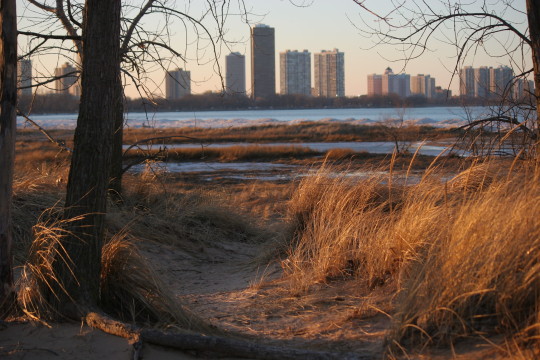
167 notes
·
View notes
Text
As promised!! My recommendations for Warhammer 40k reading
So, rayshell22live asked me what I thought GW was doing wrong vis a vis Warhammer 40k, and I responded with a rant about Black Library instead.
Oops. (Listen, a lot of this is pent up...)
But! I promised (myself) I would list my favorite stuff I've read from Warhammer 40k. For ease of access, I have divided it into several categories.
XENOS
There are not enough stories about Xenos. And apparently a lot of them aren't good. But here are a couple I read and liked!
The Infinite and the Divine by Robert Rath: Everyone recommends this, and for good reason. Fun, sometimes lighthearted, sometimes deep, it's the story of two old robots who hate each other but are forced to work together. It's a tale of two opposing forces, the past and the future, and what they both could mean for the present of the Necron race. Come for the dinosaurs and enemies-to-friends, stay for the old man fights and pranks gone horribly wrong.
War in the Museum by Robert Rath: Basically a deleted scene from The Infinite and the Divine. A short story.
Brutal Kunnin' by Mike Brooks: Orks vs. Tech Priests. Turned out to have way more humans than I would have liked, but still fun! Includes some hell-yeah moments and very quotable lines AND includes TWO non-binary characters! Very nice. Introduces two heroes for the ages: Ufthak Blackhawk, and his squig. The best squig.
Road Rage and Where Dere's Da Warp Dere's a Way by Mike Brooks: More Ufthak shenanigans! Both short stories.
Da Gobbo's Revenge by Mike Brooks: A Grot, tired of being abused by Orks, takes up the role of the ancient Grot hero Da Red Gobbo and begins a revolution. A novella, not long but fun.
The Hand of Darkness by Gav Thorpe: A lovely audio drama about Yvraine, the last hope of the Aeldari, on a mad quest to deprive Chaos of a dangerous asset. (Or, when I want to pretend to be bitter, "Rob's Not Actually Girlfriend (Seriously, She's Just An Ally) Breaks Into Mort's Basement and Ruins the Only Piece of Art He's Ever Made" It is a fantastically emo piece of art, I can't believe I've never referenced it in a fanfic before.) It's a good audio drama, I like it!
The Child Foretold by Nicholas Kaufmann: This one. This one is so. So freaking. GOOD. I just. It's so good??? A man adopts a baby. He has no idea what he's gotten himself into. Warning, it's also from Warhammer Horror.
And, recommended by friends, though I haven't read them yet:
The Twice-Dead King by Nate Crowley: A series of novels about a Necron phaeron trying to save his dynasty. Supposed to be really good, if less humorous than The Infinite and the Divine.
Day of Ascension by Adrian Tchaikovsky. Supposed to be a really good sci-fi novel all around, it tells the tale of a genestealer uprising.
THE CIAPHAS CAIN SERIES by Sandy Mitchell
Listen, you're either going to love this series, or you're going to hate it. Most people can get over the stylistic choices (seriously, there are a lot of phrases that are repeated over and over and over and over and over again by the author), but others find those phrases grating after a while. Give the series a try (personally I think the series gets really good with the second and third books) and decide for yourself. If you like it, you're in good company, and if you don't, that's okay, you're still in good company. Personal highlights for me include The Traitor's Hand, Death or Glory, Cain's Last Stand, the audio drama Dead in the Water, and the novella Good Soldiers Never Die.
BOOKS THAT MENTION MORTARION
There is probably at least one person out there who wants to know what books I recommend for the way I write him. So I included this in its own section.
The Buried Dagger by James Swallow: my first Horus Heresy novel, and the last one before the Siege. Aka "Oh Fuck, We Forgot to Give Mortarion an Actual Personality and Now He Needs to Do Some Emotional Heavy Lifting." And let me just say, Swallow knocks it out the fucking park on this one. I cried. Then I found out he's not written like this in almost ANY other story, even ones by James Swallow, and I cried even more. Do yourself a favor, pick up the audio book, because the way Jonathon Keebler says "I know" in Interval Two is heartbreaking.
"Lantern's Light" by James Swallow: A lot of BL books have what I like to call a "companion short story" that goes with it. This is the one for Mortarion's half of The Buried Dagger. It elaborates Mort's relationship with the Emperor and why it's so bad (hint: it has nothing to do with the Emperor killing his adopted dad).
Unification by Chris Wraight: One of Mortarion's sons reflects on why he follows Mortarion into battle. A companion short story to The Lords of Silence (see below).
Mortarion Pale King of Barbarus and Verdict of the Scythe by David Annandale: While I wish they had gone more in-depth with his character, they both provide us with some intriguing details into how Mortarion wages war in the Great Crusade, and why he does it in the way he does. As well as what his brothers think of him, and how that weighs on him and his actions (a lot more than he's willing to admit).
The above are really good for Mortarion as his own character, and the tragic protagonist of his own story.
Scars, the Path of Heaven, and Warhawk by Chris Wraight: Whereas these stories are good at depicting Mortarion as his own villainous character. Most stories twist and turn Mortarion's personality to depict him as the Jungian shadow of whatever character is the protagonist of this series. Not so the Jaghatai Khan trilogy. Here he is still (mostly) recognizable as the same character as the Buried Dagger's Mortarion, but now he's a villain. Kind of. He's not the main villain of the first two books, but he kind of is for the third one? He doesn't show up often, but it's interesting when he does.
Daemonology by Chris Wraight: There's only one paragraph from his perspective, and it's the last paragraph of the story. Regardless, it provides us with a rare look at how people weaker than Mortarion who aren't on his good side see him. And it shows us that, like the witches and sorcerers he hates, Mortarion has more brains than sense.
Honorable mentions:
Grandfather's Gift by Guy Haley, because Mortarion enjoys a garden in it and it mentions how much pain Mortarion's transformation is (also, he's mostly naked for most of it, make of that what you will). Flight of the Eisenstein by James Swallow has one or two good scenes with Mortarion, but he's barely in it.
HORUS HERESY AND PRIMARCHS
Saturnine by Dan Abnett: Some people hated it, some people loved it, personally I'm in the Loved It camp? It had some memorable moments and some interesting battles! On the other hand, if you're a Fulgrim fan, skip it, it does him no favors. If you're a Perturabo fan, give it a try! He gets some great Only Sane Man moments (and a shirtless scene. That's not important, but it's there.)
Magnus the Red Master of Prospero by Graham McNeill: It's a Magnus book, but it's a fuckin' banger for Perturabo. Good stuff. Petition to have McNeill write all the Perturabo stuff? Just...not the War of Rust, please.
Lorgar Bearer of the Word by Gav Thorpe: Holy shit, did Lorgar not have a happy childhood. Depicts him very sympathetically!
Fulgrim the Palatine Phoenix by Josh Reynolds and Ferrus Manus Gorgon of Medusa by David Guymer: Both of these go on the list for having scenes that live rent-free in my head, most of them involving either Fulgrim or one of Fulgrim's sons. Josh Reynolds is a really good writer in general, though I think he might be the one who doesn't write for GW/BL anymore.
A Lesson in Darkness by Ian St. Martin: Creepy, serial killer fun starring Konrad Curze doing creepy, fucked-up Night Haunter shit. An Audio Drama.
Angron Slave of Nuceria by Ian St. Martin: a grim look at Angron's backstory, and how the suffering he experienced in his past doomed his entire legion. There's a companion short story called "Ghosts of Nuceria," but I'm saving that one for when I really, really need to cry as if the world is ending, so I haven't read it yet. I've read part of it already and man. Man.
OTHERS FROM 40K
The Lords of Silence by Chris Wraight: Generally agreed to be one of the best Chaos Space Marine novels, it follows the story of a warband of Death Guard, the titular Lords of Silence, as they wage war and have existential crises. Introspective and philosophical at times, and always careful to make everyone a well-rounded character, has mystery elements. The story is told out of order and in the present tense, so if those are dealbreakers for you, you'll have to sit them out. also includes a great scene with Mortarion okay thanks bye
The Way Out by Rachel Harrison: part of the Black Library's Warhammer Horror line, it's an audio drama that will keep you guessing until the end. Spooky and creepy and mysterious.
A couple more honorable mentions to round things out. The following all have scenes that live rent-free in my mind, all are either short stories or novels from Warhammer Horror, all take place in 40k:
The Deacon of Wounds by David Annandale; The Bookkeeper's Skull by Justin D. Hill; Imperator Gladio by Richard Strachan.
AND A FEW FROM AGE OF SIGMAR Not very many, though, because I haven't read very many...
Hallowed Knights: Plague Garden by Josh Reynolds: the only AoS novel I've ever read. Loved it. If Torgun dies, I'll fucking riot. Part of a series that may have been stopped, sadly.
The Vintage by David Annandale: a Warhammer Horror short story I hated the first time, loved the second time. Got a really killer premise, pun not intended. From that one year where Games Workshop decided that all of the Warhammer Horror Week stories would be about vampires.
Anyway, some of the stuff I enjoyed.
28 notes
·
View notes
Text
a personal reflection on decolonization
riel s. | 2022
Tansii kiiya (hello, how are you?) my name is riel starr and I am a Red River Michif artist and academic. my history on his land begins thousands of years ago among the peoples of the great plains, and my written history begins in the late 1600s with my first French ancestors and their unnamed first nations wives. my first First Nations ancestor is an unnamed woman referred to in my grandmother’s family tree as “Cree Woman”. I am Red River Métis on my mother’s side. Our historic Métis family names are Berthelet, Caron, St. Germaine, Dazé, Larivière and Dubois, and we come from the communities of Point à Grouette (now called St. Agathe), St. Norbert, and St. Vital (now modern-day Winnipeg) as well as the historic Batoche, Saskatchewan. My Berthelet ancestors were notable community leaders in Pointe à Grouette and my Caron ancestors including my fifth great uncle jean caron sr. fought in the North West resistance of 1885 at the battle of Duck Lake when he was fifty-two years old. Jean Caron Sr’s house is now a historic site in Batoche. As for myself my mother is a Métis educator and academic and my father is a settler archaeologist-turned-locksmith. I introduce myself in this way, the traditional way of Métis writers to contextualize my family, my knowledge and experiences, as well as my place on this land.
Natually, my native mother and my settler archaeologist father never married and split before I was old enough to form any memories. Museums and history have always been a fascination to me; the Royal Terrell Museum in Drumheller, which I dubbed “the dead dinosaur museum” and the Royal Alberta Museum which I called “the dead mouse museum” after my favourite display. The display was a larger-than-life diorama of a mouse, it’s intestines showing, the organisms that helped decompose the corpse were also displayed, massive daddy long legs, gigantic ants, worms thicker than my arm. The RAM is an interesting place. A few years ago, it was moved into a new building downtown and I could no longer spend hours finding fossils in the limestone exterior of the original museum. The place had changed drastically. As I reminisce on what I loved about the RAM I realize that all the things I disliked were their representations of Indigenous people; the uncanny wax figures with placid skin that did not resemble a single Native person’s skin that I had met. and the artwork they portrayed as artifacts. What makes a beaded bag so different from a Van Dyck if they’re the same age? And honoured the same amount by the people who made them?
Another place of importance growing up was Fort Edmonton Park. Like Heritage Park, Fort Edmonton has costumed interpreters, who teach visitors history as if the interpreters were of that time. In the summer of 2017, my lifelong dream came true, and I became a volunteer costumed interpreter with my mentor Sheldon Stockdale, another Métis person, and we were able to teach our history in the way we felt was right, something deeply important to the Métis people. An experience we had that stands out vividly is working on Fort Edmonton’s 1920 Street, and educating visitors on the history of pemmican, a sort of ancient protein bar made from berries, dried meat, and animal fat. Pemmican was a staple of survival for the Métis, and we were asking visitors to help us in redesigning the packaging for the bar. The historic package had a representation of an Indigenous person on it, a caricature of a race. We asked visitors if turning Indigenous people into mascots should be accepted, and sadly many people didn’t see the problem. Sheldon and I borderline argued with a man who seemed to see no problem in reducing us, the people speaking to him, to caricatures. In a similar vein, someone once gave me Chicago Blackhawk’s stickers when i was six, and not knowing a thing about hockey I asked my mother who the stickers were of. I’m guessing my mother did not want to explain the history of colonization and caricatures of Indigenous people, so she dismissed my question by telling me that the man in the tacky illustration was my ancestor.
Decolonizing art history seems like an impossible task, and perhaps it is. You cannot separate someone like Emily Carr from art history in Canada, however you can change the way you teach her work. Perhaps decolonizing art history means recognizing the ways in which “art history” as a field of study is deeply Euro-centric, and how the way of teaching this history is the same. I took my first semester at AUArts in the fall of 2020 after transferring from MacEwan after completing a two-year diploma at MacEwan University. I had a sculpture class a media arts class an art history class. The more I consider how to decolonize our history the more I understand that it is not the history that can be decolonized, it is the way we are teaching said history. It is the way that so much of our education is taught to us through a colonial lens, rather than a multifaceted history with a multitude of perspectives and peoples contributing until an entire picture is formed.
In the fall of 2020 in my media arts class my professor Kurtis Lesick was discussing an artist, a black artist who had him and others participate in a performance in which in that space the black artist allowed the participants to say the N-word. Rather than describing the piece in the way I just did removing the slur, Kurtis Lesick made the conscious decision to say the N- word twice. A person I had once thought to be an ally of mine, who knew the language of decolonization. Earlier this year a classmate in this class who was also in my sculpture class in the winter of 2022 told me that ‘knowing me has made her a better person’, this woman does not know me, and I do not know her, but I knew her in that moment. I knew that she wanted me to absolve her of her settler guilt. White settlers love referencing Tuck and Yang’s Decolonization Is Not a Metaphor but sometimes I wonder if they truly understand that it is simply not enough to know the language of decolonization, that you must be actively anti-colonial in a field that is built on colonization.
I spent a lot of time at Fort Calgary this semester for my FINA class, critiquing their exhibitions wondering how they can be improved if they can be improved, and I learned that given their budget that it is not possible. Fort Calgary, like other institutions cannot afford to replace their current exhibits and entirely redesign the way they teach history. What they can do is acknowledge the missing pieces, they can acknowledge the gaps they can acknowledge the fact that there’s more than one canon of history. Sometimes I wonder if the mosaic of history is too complex to decolonize; knowing that we will never return to a world like the one that existed pre-colonization. I think about my one classmate who tokenizes me, who knows how to use decolonial language to appear one way, but who never puts those concepts into practice. I think about the settlers who think that decolonization is re-colonizing the Americas but with “the Indians” in charge this time.
I now understand that decolonizing art history cannot happen without first decolonizing institutions. I have learned that we cannot forget that we once taught art history in an i way we cannot forget the way colonization has infiltrated every aspect of the education system down to the teaching styles of each professor. if we forget how colonial art history is in the first place, we will forget why we need to decolonize. Considering the hand that art history is hard in colonization around the world, I consider about the way southeast Asian women’s bodies are talked about in my textbooks versus European odalisque paintings. Brown people’s bodies were inherently sexualized and seen as dirty, while white people’s bodies were adored and deemed Classical.
Maybe colonization is another movement in the worldwide canon of art history. Another period in the bar graph of history- as google images seems to see art history. Perhaps Emily Carr and Paul Gauguin are the faces of this genre. Just as colonization cannot be forgotten among its victims, it cannot be forgotten by its perpetrators, who still believe they are a superior culture and race. Genres of literature such as post-colonial writing from India and Sri Lanka may suggest, there was a period of colonial art and literature, perhaps it is ongoing, possibly dying out, maybe here to stay. There will always be an antithesis, an attempt to view art and art history from a different perspective, and that is how we can decolonize art history.
#i posted this on my artist page but i only use it for professional reasons and i don't wanna share it here unless you're a mutual lolol#riel text#my writing#academia#institutional critique#art writing#decolonization#indigenous#métis#michif#indigenous art#first nations art#FNMI art#art#alberta#calgary#post colonialism#colonialism#canada#land back
7 notes
·
View notes
Photo
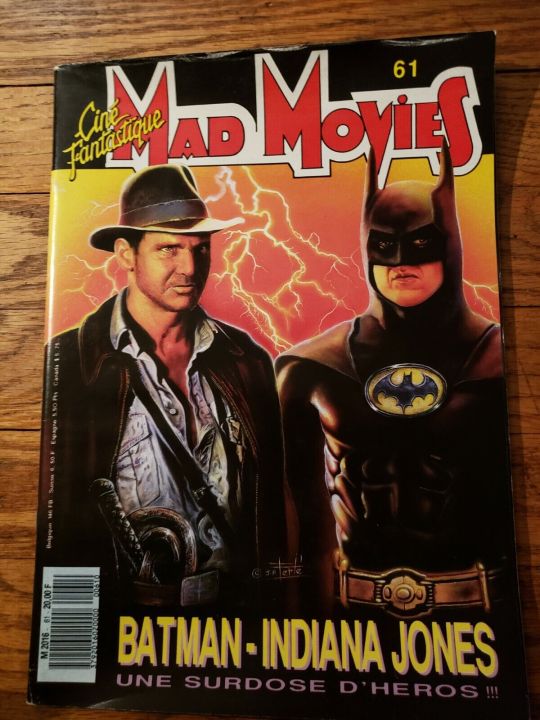
Canceled Batman/Indiana Jones Crossover is DC’s Biggest Missed Opportunity
Brash, innovative and often controversial, Howard Chaykin has had a 40-year career in comics, with works like American Flagg and his revamps of The Shadow and Blackhawk solidifying his legacy in the industry. It’s easy to see why Chaykin would have been the first choice for a Batman/Indiana Jones team-up. Chaykin has a long history with Batman, first drawing the character in a 1974 issue of Detective Comics and producing a number of classic stories in the decades since. Chaykin also briefly worked on Indiana Jones, drawing the sixth issue of Marvel’s The Further Adventures of Indiana Jones in the 1990s and providing a number of covers for the series thereafter.
In a 2012 interview with the Indycast, Chaykin dropped the bombshell that he had been hired to write and draw an Indiana Jones/Batman crossover sometime around 2009-2010. “It was gonna be a four-issue series,” Chaykin explains, before elaborating that the story would have taken place in 1939 and concerned Indy investigating “reports of a mysterious bat-winged, man-sized figure haunting Gotham City.” Chaykin goes on to spell out the rest of the overall plot, which sounds like a typical comic book team-up: “The first issue would be Indiana tracking down this mysterious bat-creature, you know, and ultimately teaming up with him in a plot of some sort.” The writer/artist was gung-ho on the project, describing it as a “natural, great crossover, one of those synergistic, perfect combinations of characters.”
In many ways, Chaykin is the perfect creator to tackle a Batman/Indiana Jones team-up. As a writer, his expertise in the pulp adventures and old movie serials that inspired Indiana Jones in the first place is second-to-none, and as an artist, he excels at capturing the fashion and overall design of the time period. Further details like the 1939 setting are enticing, as Batman made his debut in our world in May of that year with the release of Detective Comics #27. There’s always an element of Batman that works best in that milieu, and pairing the Dark Knight with Dr. Henry Jones, Jr. in that setting would have made for a fun series. Seeing Indy interact with Batman’s rogues' gallery alone invites a host of interesting scenarios: Indy runs across a certain cat burglar stealing an artifact from a Gotham museum, or perhaps he stumbles upon one of Ra’s al Ghul’s Lazarus Pits in his travels. The possibilities are endless.
So why didn’t the crossover happen? Not even Chaykin knows for sure, saying, “It collapsed for a number of reasons, none of which I completely understand.” Given all the parties involved, it’s not surprising that a crossover of this magnitude would wind up sinking under the weight of its own expectations. And because Lucasfilm was later sold to Disney, it seems even more unlikely now that Batman and Indiana Jones will cross paths at any time in the near future, but fans can always dream.
Source: ScreenRant
(image via eBay)
7 notes
·
View notes
Video
Lockheed XF-90A 46-0687 by Wing attack Plan R Via Flickr: The Lockheed XF-90 was built in response to a United States Air Force requirement for a long-range penetration fighter and bomber escort. The same requirement produced the McDonnell XF-88 Voodoo. Lockheed received a contract for two prototype XP-90s (redesignated XF-90 in 1948). The design was developed by Willis Hawkins and the Skunk Works team under Kelly Johnson. Two prototypes were built (s/n 46-687 and -688). Developmental and political difficulties delayed the first flight until 3 June 1949, with Chief Test Pilot Tony LeVier at the controls. Performance of the design was considered inadequate due to being underpowered, and the XF-90 never entered production. Design and development: In response to a 1945 Army request for an advanced jet fighter, Lockheed proposed a jet powered initially by a Lockheed L-1000 axial flow turbojet, and then the General Electric J35. Further design refinements included using two Westinghouse J34 engines with afterburners. After data showed that a delta planform would not be suitable, the Lockheed Model 90 was built in 1947 as a mock-up. The final design embodied much of the experience and shared the intake and low-wing layout of the previous P-80 Shooting Star, but with 35° sweptback wings, a sharply-pointed nose, and two Westinghouse J34-WE-11 axial-flow turbojet engines, providing a total thrust of 6,200 lbf (27.6 kN), mounted side-by-side in the rear fuselage and fed by side-mounted air intakes. The wings had leading edge slats, Fowler flaps, and ailerons on the trailing edge. The pressurized cockpit was fitted with an ejection seat and a bubble canopy. Proposed armament was six 20 mm (.79 in) cannons. The internal fuel was supplemented by wingtip-mounted tanks, bringing total fuel capacity to 1,665 gal (6,308 l). The use of 75ST aluminum rather than the then-standard 24ST aluminum alloy, along with heavy forgings and machined parts, resulted in an extremely well-constructed and sturdy airframe. However, these innovations also resulted in an aircraft with an empty weight more than 50 percent heavier than its competitors. The first XF-90 used non-afterburning J34s, but these lacked the thrust for takeoff as rocket-assisted RATO were required for most of the first flights unless it carried a very low fuel load. The second (XF-90A) had afterburners installed which had been tested on an F-80 testbed. Even so, the aircraft remained underpowered. Testing and evaluation: The XF-90 was the first USAF jet with an afterburner and the first Lockheed jet to fly supersonic, albeit in a dive. It also incorporated an unusual vertical stabilizer that could be moved fore and aft for horizontal stabilizer adjustment. Partly because Lockheed's design proved underpowered, it placed second to McDonnell's XF-88 Voodoo which won the production contract in September 1950, before the penetration fighter project was abandoned altogether. Upon Lockheed losing the production contract, the two prototypes were retired to other testing roles. The first aircraft (46-687) was shipped to the NACA Laboratory in Cleveland, Ohio in 1953 for structural tests. It was no longer flyable, and its extremely strong airframe was tested to destruction. The other (46-688) survived three atomic blasts at Frenchman Flat within the Nevada Test Site in 1952. Notable appearances in media: The XF-90 lived on as the aircraft flown through the 1950s by the popular Blackhawks Squadron in the comic book series of the same name, first published by Quality Comics and later by DC Comics. The Blackhawks flew fictional "B" and "C" models, single engine production variants of the twin-engine XF-90. Aircraft disposition: 46-0687 – tested to destruction at NACA lab in Cleveland, Ohio. 46-0688 – in storage and awaiting restoration at the National Museum of the United States Air Force in Dayton, Ohio. In 2003, the heavily damaged hulk was recovered from the Nevada test site and moved there. It is currently undergoing minor restoration in one of the Museum's restoration facility hangars. Its wings have been removed, and its nose is mangled from the nuclear blasts. During the decontamination process, all the rivets had to be removed to remove radioactive sand. At present, the museum plans to display the XF-90 in its damaged, mostly unrestored condition, to demonstrate the effects of nuclear weaponry. (wiki)
2 notes
·
View notes
Text
While vintage aircraft are a topic at this hour, I'm wishing I had the health and the income to travel to go visit places like this. And still had the health to build balsa and tissue, rubber band power, flying models of these classics.
1 note
·
View note
Text
Creative Collaboration
Collaboration is at the core of creative leadership. Going into my project this is something that I knew in theory, but that I learned first hand during my project. In my proposal I made plans for a 2-year-long community building project to improve the relationship between Grinnell College and the nearby Meskwaki Nation. Unfortunately, due to time constraints and the fact that I was working alone, I was not able to make much progress. Also, due to the Thanksgiving holiday and the end of the semester approaching, it was difficult to get ahold of people who likely missed my emails or did not have time to work on a new project. My proposed creative leadership project was all about collaboration and community building, and that was exactly the piece that was missing in my execution. Creative leadership is a form of leadership that encourages teamwork and social justice, rather than traditional top down leadership that pushes for results at all costs. The premise of my project was to improve the relationship between Grinnell College and the Meskwaki Nation by creating a scholarship program specifically for Meskwaki students, having an art showing of Meskwaki artwork, and creating a class about Native American history and culture. Since I only had about 3 weeks to complete the project, I had to narrow my focus and think about realistic expectations for what I could accomplish. I decided to look further into a Meskwaki art showing, because this seemed like the piece of my original proposal that I could make the most progress on in a short amount of time.
I was able to do some research and emailed with my college advisor, an Art History professor, who was incredibly helpful. I learned that there was already an effort being made to increase engagement with the Meskwaki community, and two events had already taken place in the fall semester. The first was a talk by Ned Blackhawk, a Native American historian and professor at Yale, about Native American history. The second was a talk by Eric Steven Zimmer, the author of “Red Earth Nation: a history of the Meskwaki settlement.” These talks were attended by both Meskwaki community members and Grinnell students, and are a great way to begin inviting Meskwaki people to join the campus community. In my research, I found that in 2019 the Grinnell College Museum of Art held a show titled “Fiber Artists of Iowa” which was sponsored by the Craft Guild of Iowa City and the Iowa Federation of Handweavers and Spinners. This show is similar to what I wanted to do, because it was a collection of different works from different artists that followed a main theme. This could give me a good blueprint to follow for the Meskwaki art showing. I also searched the Grinnell Museum Collection and found that they already owned two photographs of Meskwaki people from the 20th century. In addition, they own numerous other photographs of Native people from other areas and works by Native artists. These pieces combined with pieces lent by the Meskwaki Cultural Center and Museum could be used to make an interesting art showing about Native American art and history.

(Artwork by Sarah A. YoungBear-Brews circa 2014, part of the collection at the Meskwaki Cultural Center and Museum in Tama, Iowa)
This would be a physical manifestation of the creative leadership collaboration I hope to incite between Grinnell College and the Meskwaki Nation. Furthermore, in order to put together the art showing I would be required to collaborate with many people from both the Meskwaki Nation and the college, including the directors of the Grinnell College Museum of Art and the Meskwaki Cultural Center and Museum. In this sense, I would be more of a facilitator in the collaboration of the College and the Nation rather than a traditional leader who controls and gives directions. This is exactly how I view creative leadership, as a way to connect people and encourage them to work together and explore creative pursuits in an effort to improve community and equity.
0 notes
Link
0 notes
Text
Illinois
Chicago • 300 South Wacker • 360 Chicago Observation Deck • Anderson Shumaker • Balboa Monument • Batcolumn • Big Monster Toys • Big Smile Dental • Billy Goat Tavern • Billy Goat Tavern (at The Mart) • Billy Goat Tavern (Navy ) • Billy Goat Tavern (near United Center) • Billy Goat Tavern (Ohare Airport- Concourse C) • Billy Goat Tavern (The Original) • Billy Goat Tavern (Wrigleyville) • Bob Newhart Statue • Bohemian National Cemetery • Busy Beaver Button Co • Chicago Architecture Center • Chicago Fed Money Museum • Cloud Gate • Creative Circle • Crown Fountain • Daley Plaza • Department of Medicinal Chemistry and Pharmacognosy • Douglas Tomb State Historic Site • Field Museum • Former 7th District Police Station • Fountain of Time • Gallagher House • Geographical Center of Chicago • Graceland Cemetery • Grant Park • Historic Begin Route 66 Sign • Hotel Lincoln - JDV by Hyatt • Hubcap Yard House • Humboldt Park • Hyde Park Hair Salon & Barber • International Museum of Surgical Science • Intuit: The Center for Intuitive and Outsider Art • Jack Brickhouse Memorial • John Hancock Center • Klairmont Kollections Automotive Museum • Kocol Mark S • K Three Welding • L. Frank Baum Yellow Brick Road • Los Portales Mexican Restaurant • McDonald's • Merchandise Mart • Midwest Eye Center - Chicago • Monument To The Great Northern Migration • New Colony Building • Nuclear Energy Sculpture • Obama Kissing Rock • Oz Park • Ravenswood ArtWalk • Robin Williams Mural • Rosehill Cemetery • Sanchez Lab • Shit Fountain • Sims Metal Management • Skydeck Chicago • SP+ Parking • Superdawg Drive-In • Swoon • Taco Bell Cantina • Tribune Tower • Twisted Spoke • United Center • University of Chicago • Victory Gardens Theater • Walt Disney Birthplace Home • Weber Grill Restaurant • Winston's Sausages • Wolfy's • Wooly Mammoth • The Wormhole Coffee • Wrigley Field
Fox River Grove • Bettendorf Castle
Freeport • Little Cubs Field • Union Dairy
Fulton • The Dutch Oven • Heritage Canyon • Windmill Cultural Center
Galena • Belvedere Mansion • U.S. Grant Home State Historic Site • West Street Sculpture Park
Galva • Galva City Police Department
Gardner • Streetcar Diner • Two Cell Jail
Gays • Two Story Outhouse
Geneva • Chicago Soccer Academy • Fabyan Windmill • Oak Hill Cemetery • Good Templar Park Association
Glen Ellyn • College of DuPage • College of DuPage, Health and Science Center
Glenview • Abt Electronics
Granite • Chain of Rocks Bridge • Everclean Car Wash • Granite City Park District
Grayslake • Lake County Farm Bureau
Greenville • DeMoulin Museum
Gridley • Telephone Museum of Gridley
Griggsville
Gurnee • El Rancho Motel
Hartford • Lewis & Clark Confluence Tower
Harvard • Five Point Park • RavenStone Castle
Hebron • Basketball Water Tower
Herod • Gap Bar • Garden of the God's • Herod Cave Historic Site • Shawnee Bigfoot Statue
Highland Park • Giant Hawk Head and Nest
Hillsboro • Abraham Lincoln Statue Plaza
Hillside • Mount Carmel Cemetery
Hinsdale • Robert Crown Center For Health Education
Homewood
HoopPole • St. Mary of the Fields Catholic Church
Hopewell • Whispering Giant Park
Hudson • Comlara Park
Hudsonville • Hutson Memorial Park
Inverness • Village of Inverness
Iuka • Quandt's Supply
Jacksonville • Brennan HVAC
Joliet • Blues Brothers Copmobile • Dick's Towing Service Inc • First Dairy Queen Location • Illinois Rock & Roll Museum on Route 66 • Liberty Meadow Estates • Old Joliet Prison • Route 66 Food n Fuel
Justice • Resurrection Cemetery
Kankakee • 5th Avenue Community Gardens • Alexander Construction and Innovative Mobile Marketing • American Legion Kankakee Post 85 • Dairy Queen
Kaskaskia • Kaskaskia Bell State Memorial
Kent • Blackhawk Battlefield Park
Kewanee
Lemont • Argonne Welcome Center Northgate
Lerna • Lincoln Log Cabin State Historic Site • Shiloh Cemetery • Thompson's Welding Service
Lexington • Crazy Presidential Elephant
Liberty
Libertyville • Lambs Farm
Lincoln • Hotel Lincoln Inn • Lincoln City Hall • Lincoln Watermelon Monument • The Mill Museum on Route 66 • Postville Courthouse State Historic Site • Tiny Church • The Tropics Restaurant Neon Sign
Lincolnshire • Par-King Skill Golf
Lincolnwood • Novelty Golf & Games
Livingston • Pink Elephant Antique Mall
Lockport • Lincoln Landing • Lockport Powerhouse
Loda • Loda Park
Lombard • Weber Grill Restaurant & Cooking School
Long Grove • Sock Monkey Museum
Lynnwood • Clarke's Garden Center & Stone Depot
Lyons • Chicago Portage National Historic Site
Macomb • Living Lincoln Topiary Monument
Makanda • Giant City State Park Lodge & Restaurant • Rainmaker Art Studio • Water Tower
Malta • Old School Pizza
Mapleton • Butler Haynes Pavilion • Hollis Park District
Marseilles • Middle East Conflicts Wall Memorial
Marshall • 1918 Brick National Road • World's Largest Gavel
Martinsville • Martinsville Agricultural Fair • Moonshine Store
Matanzas Beach
Mattoon • Burger King (Mattoon)
McCook • Welcome To Fabulous McCook Illinois Sign
Melrose Park • Kiddieland Amusement Park Sign
Metropolis • Big John Super Foods Store • Fort Massac State Park • kryptonite rock • Lois Lane Statue • Masonic Cemetery • Massac County Courthouse Annex • The Super Museum
Midlothian • Bachelor's Grove Cemetery
Milford
Mokena • Creamery
Moline
Monmouth
Morton • Red Barn Tree Shop
Mount Carroll • Raven's Grin Inn
Mount Morris • Illinois Freedom Bell
Mt Olive • Soulsby Shell Station • Union Miners Cemetery
Mt. Pleasant • Grave of King Neptune the Pig • Trail of Tears Welcome Center
Mt. Vernon • Mt.Vernon Overhead Door
Murphysboro • Holiday Inn Express & Suites Murphysboro-Carbondale
Naperville • Central Park • Dick Tracy Statue • Highlands Elementary School • Millennium Carillon • Naperville Public Library - 95th Street Library • Naperville Public Library - Naper Blvd. Library • Naperville Public Library - Nichols Library • Naperville Train • Wrinkle Fairy
Nashville • The Traveler’s Chapel
Nauvoo • Nauvoo-Colusa Elementary/Jr High School
Newton • A-J Welding & Steel • Burl Ives Statue • Mug Tree
Niles • Booby's • Leaning Tower YMCA • Niles Veteran's Memorial Waterfall • President Abraham Lincoln bench • Veterans Memorial Monument Nilwood • Turkey Tracks on Route 66
Normal • Carl's Ice Cream Factory • Sprague's Super Service Station
Norridge • Westlawn Cemetery & Mausoleum
North Aurora • Scott's Vintage & Antiques
North Riverside • Caledonia Senior Living & Memory Care
Norway • Norwegian Settlers State Memorial
Oak Brook • Fullersburg Woods Nature Education Center
Oak Forest • King Heating and Air Conditioning
Oak Lawn • Cardinal Liquor Barn Inc
Odell • Standard Oil of Illinois Gas Station
Oglesby • The Rootbeer Stand • Starved Rock State Park
Olney • Olney Chamber of Commerce • Olney City Park • The Repair Shop
Oquawka • Norma Jean, Circus Elephant Monument
Oregon • Lowden State Park • Lowden State Park Campground • Oregon Park East
Ottawa • Ho-Ma-Shjah-Nah-Zhee-Ga Indian Monument • Lincoln-Douglas Park • Ottawa Avenue Cemetery • Remembering the Radium Girls • Shoe Tree • Volvo at Carling Motors Co. Limited
Palatine • Ahlgrim Family Funeral Services
Pana • Giant Hand with Painted Nails
Park Forest • Chinese House @ 428 N. Orchard Drive • Park Forest Rail Fan Park
Pekin • Double D's Soft Serve
Peoria Heights • Heights Tower
Peoria • C.T. Gabbert Remodeling & Construction • Neal Auto Parts • Peoria Plaza Tire • Peoria Riverfront Museum • Richard Pryor statue by Preston Jackson • Wheels O' Time Museum Paris • Sapp Bros. Travel Center
Peru
Petersburg • Oakland Cemetery
Piasa • Southwestern Middle School
Plainfield • Plainfield Community Consolidated School District 202
Plano • Smallville Superfest
Pontiac • Burma Shave Signs • Livingston County War Museum • Route 66 Association of Illinois • Route 66 decommissioned Illinois State police headquarter
Port Byron • Will B. Rolling Statue
Princeton • Owen Lovejoy House • Red Covered Bridge
Quincy • St Peters Cemetery
Rantoul • Chanute Air Force Base (Decommissioned) • Hardy's Reindeer Ranch • Rantoul National Aviation Center Airport-Frank Elliott Field
Rend Lake • Rend Lake Golf Course Restaurant & Banquet
River Grove • Hala Kahiki Lounge
Riverdale • Riverdale, IL Water Tower
Roanoke
Rochelle • Vince's Pizza & Family Restaurant
Rock Island • Black Hawk State Historic Site • Chippiannock Cemetery • Rock Island Arsenal
Rockford • Beyer Peaches Stadium • Lockwood Park & Trailside Equestrian Centre • Midway Village Museum • Rock Men
Rolling Meadows • Rolling Meadows Park District Headquarters
Romeoville • White Fence Farm Main Restaurant
Rondout
Roscoe • Historic Auto Attractions
Roselle • Mark Drug Pharmacy and Home Health
Rosemont • Rosemont Water Tower Russell • Russell Military Museum
Salem • Pollard Motors
Sandwich • Bull Moose Bar & Grille • Sandwich City Hall • Sandwich Opera House
Savanna • Savanna Army Depot
Schaumburg • Al Larson Prairie Center For the Arts • Medieval Times Dinner & Tournament • Weber Grill Restaurant & Cooking School
Scott AFB • Scott Field Heritage Air Park
Seneca • LST Memorial Public Boat Launch
Shelbyville • Mobile Wedding Chapel & Wedding Ceremony • Shelby County Courthouse
Silvis • Hero Street Monument Committee
South Barrington • Goebbert's Farm - South Barrington
South Elgin • Fox Valley Trolley Museum
Springfield • 1908 Race Riot Memorial • Abraham Lincoln Presidential Library and Museum • Ace Sign Co • Capitol Complex Visitors Center • County Market • Cozy Dog Drive In • Derringer Auto Care • Dumb Records • Illinois State Capitol • Illinois State Fairground • Illinois State Military Museum • Lauterbach Tire & Auto Service • Lincoln Monument Association • Mahan Filling Station • Oak Ridge Cemetery • Pearson Museum • Shea's Gas Station Museum • Southeast High School • Springfield Amtrak Station • Young Lincoln Mural
St. Anne • St. Anne Caboose
St. Charles • Ghoulish Mortals
St. Elmo • Driftstone Pueblo
Staunton • Henrys Rabbit Ranch
Stewardson • Moomaw Truck Alignment INC. Stickney • Mt. Auburn Cemetery
Stockton • Bottle Shed Bar & Pizzaria
Stone Park • Casa Italia
Streamwood • Spirit of America Car Wash
Streator • Canteen Monument • Pluto Coffee and Tea • Schultz Monument Co
Summit • Argo Community High School
Sycamore • Statue of Mr. Pumpkin
Tampico • Ronald Reagan's Birthplace
Taylorville • Christian County Circuit Clerk • Oak Hill Cemetery
Teutopolis • Monastery Museum
Towanda • Dead Man's Curve
Troy Grove • Wild Bill Hickok State Memorial
Union • Illinois Railway Museum
University Park • Governors State University
Urbana • Natural History Building • U of I Pollinatarium • University of Illinois Department of Electrical and Computer Engineering • University of Illinois Urbana-Champaign
Vandalia • Jay's Inn • Kaskaskia Dragon • Vandalia City Hall • Vandalia Statehouse State Historic Site
Vienna • Big Boys Bar & Grill
Villa Park • Safari Land
Volo • Jurassic Gardens • The Party Barn at Volo Museum • Volo Museum • Volo Museum Auto Sales
Wadsworth • Gold Pyramid
Wapella • Prairie Built Barns Wapella
Washington • Lincoln Statue “Return Visit” Washington Park • Eddie's
Watseka • Smiley Face Water Tower
Waukegan • Club Tiki Bar & Video Slots • Waukegan Public Library • Waukegan Roofing | TPO Commercial Flat Roof Repair & Replacement
Wedron
Wenona • Coal Mine Car Monument
Westport • Lincoln Trail State Memorial
Wheaton • Armerding Center for Music and Arts • Billy Graham Museum • Jack T. Knuepfer County Administration Building • Wheaton College • Wheaton College Marion E Wade Center • Wheaton College Observatory (IL) • Wheaton Windmill Wheeling • Superdawg Drive-In
Whitehall
Willow Hill • Mound Cemetery
Willowbrook • Dell Rhea's Chicken Basket
Wilmette • Bahá'í House of Worship
Wilmington
Winnetka
Woodlawn
Woodridge • Hollywood Blvd Cinema
Woodstock • Royal Victorian Manor • Shoe Tree
Worth • Ball Fore Miniature Golf
0 notes
Text
Illinois
Chicago • 300 South Wacker • 360 Chicago Observation Deck • Anderson Shumaker • Balboa Monument • Batcolumn • Big Monster Toys • Big Smile Dental • Billy Goat Tavern • Billy Goat Tavern (at The Mart) • Billy Goat Tavern (Navy ) • Billy Goat Tavern (near United Center) • Billy Goat Tavern (Ohare Airport- Concourse C) • Billy Goat Tavern (The Original) • Billy Goat Tavern (Wrigleyville) • Bob Newhart Statue • Bohemian National Cemetery • Busy Beaver Button Co • Chicago Architecture Center • Chicago Fed Money Museum • Cloud Gate • Creative Circle • Crown Fountain • Daley Plaza • Department of Medicinal Chemistry and Pharmacognosy • Douglas Tomb State Historic Site • Field Museum • Former 7th District Police Station • Fountain of Time • Gallagher House • Geographical Center of Chicago • Graceland Cemetery • Grant Park • Historic Begin Route 66 Sign • Hotel Lincoln - JDV by Hyatt • Hubcap Yard House • Humboldt Park • Hyde Park Hair Salon & Barber • International Museum of Surgical Science • Intuit: The Center for Intuitive and Outsider Art • Jack Brickhouse Memorial • John Hancock Center • Klairmont Kollections Automotive Museum • Kocol Mark S • K Three Welding • L. Frank Baum Yellow Brick Road • Los Portales Mexican Restaurant • McDonald's • Merchandise Mart • Midwest Eye Center - Chicago • Monument To The Great Northern Migration • New Colony Building • Nuclear Energy Sculpture • Obama Kissing Rock • Oz Park • Ravenswood ArtWalk • Robin Williams Mural • Rosehill Cemetery • Sanchez Lab • Shit Fountain • Sims Metal Management • Skydeck Chicago • SP+ Parking • Superdawg Drive-In • Swoon • Taco Bell Cantina • Tribune Tower • Twisted Spoke • United Center • University of Chicago • Victory Gardens Theater • Walt Disney Birthplace Home • Weber Grill Restaurant • Winston's Sausages • Wolfy's • Wooly Mammoth • The Wormhole Coffee • Wrigley Field
Fox River Grove • Bettendorf Castle
Freeport • Little Cubs Field • Union Dairy
Fulton • The Dutch Oven • Heritage Canyon • Windmill Cultural Center
Galena • Belvedere Mansion • U.S. Grant Home State Historic Site • West Street Sculpture Park
Galva • Galva City Police Department
Gardner • Streetcar Diner • Two Cell Jail
Gays • Two Story Outhouse
Geneva • Chicago Soccer Academy • Fabyan Windmill • Oak Hill Cemetery • Good Templar Park Association
Glen Ellyn • College of DuPage • College of DuPage, Health and Science Center
Glenview • Abt Electronics
Granite • Chain of Rocks Bridge • Everclean Car Wash • Granite City Park District
Grayslake • Lake County Farm Bureau
Greenville • DeMoulin Museum
Gridley • Telephone Museum of Gridley
Griggsville
Gurnee • El Rancho Motel
Hartford • Lewis & Clark Confluence Tower
Harvard • Five Point Park • RavenStone Castle
Hebron • Basketball Water Tower
Herod • Gap Bar • Garden of the God's • Herod Cave Historic Site • Shawnee Bigfoot Statue
Highland Park • Giant Hawk Head and Nest
Hillsboro • Abraham Lincoln Statue Plaza
Hillside • Mount Carmel Cemetery
Hinsdale • Robert Crown Center For Health Education
Homewood
HoopPole • St. Mary of the Fields Catholic Church
Hopewell • Whispering Giant Park
Hudson • Comlara Park
Hudsonville • Hutson Memorial Park
Inverness • Village of Inverness
Iuka • Quandt's Supply
Jacksonville • Brennan HVAC
Joliet • Blues Brothers Copmobile • Dick's Towing Service Inc • First Dairy Queen Location • Illinois Rock & Roll Museum on Route 66 • Liberty Meadow Estates • Old Joliet Prison • Route 66 Food n Fuel
Justice • Resurrection Cemetery
Kankakee • 5th Avenue Community Gardens • Alexander Construction and Innovative Mobile Marketing • American Legion Kankakee Post 85 • Dairy Queen
Kaskaskia • Kaskaskia Bell State Memorial
Kent • Blackhawk Battlefield Park
Kewanee
Lemont • Argonne Welcome Center Northgate
Lerna • Lincoln Log Cabin State Historic Site • Shiloh Cemetery • Thompson's Welding Service
Lexington • Crazy Presidential Elephant
Liberty
Libertyville • Lambs Farm
Lincoln • Hotel Lincoln Inn • Lincoln City Hall • Lincoln Watermelon Monument • The Mill Museum on Route 66 • Postville Courthouse State Historic Site • Tiny Church • The Tropics Restaurant Neon Sign
Lincolnshire • Par-King Skill Golf
Lincolnwood • Novelty Golf & Games
Livingston • Pink Elephant Antique Mall
Lockport • Lincoln Landing • Lockport Powerhouse
Loda • Loda Park
Lombard • Weber Grill Restaurant & Cooking School
Long Grove • Sock Monkey Museum
Lynnwood • Clarke's Garden Center & Stone Depot
Lyons • Chicago Portage National Historic Site
Macomb • Living Lincoln Topiary Monument
Makanda • Giant City State Park Lodge & Restaurant • Rainmaker Art Studio • Water Tower
Malta • Old School Pizza
Mapleton • Butler Haynes Pavilion • Hollis Park District
Marseilles • Middle East Conflicts Wall Memorial
Marshall • 1918 Brick National Road • World's Largest Gavel
Martinsville • Martinsville Agricultural Fair • Moonshine Store
Matanzas Beach
Mattoon • Burger King (Mattoon)
McCook • Welcome To Fabulous McCook Illinois Sign
Melrose Park • Kiddieland Amusement Park Sign
Metropolis • Big John Super Foods Store • Fort Massac State Park • kryptonite rock • Lois Lane Statue • Masonic Cemetery • Massac County Courthouse Annex • The Super Museum
Midlothian • Bachelor's Grove Cemetery
Milford
Mokena • Creamery
Moline
Monmouth
Morton • Red Barn Tree Shop
Mount Carroll • Raven's Grin Inn
Mount Morris • Illinois Freedom Bell
Mt Olive • Soulsby Shell Station • Union Miners Cemetery
Mt. Pleasant • Grave of King Neptune the Pig • Trail of Tears Welcome Center
Mt. Vernon • Mt.Vernon Overhead Door
Murphysboro • Holiday Inn Express & Suites Murphysboro-Carbondale
Naperville • Central Park • Dick Tracy Statue • Highlands Elementary School • Millennium Carillon • Naperville Public Library - 95th Street Library • Naperville Public Library - Naper Blvd. Library • Naperville Public Library - Nichols Library • Naperville Train • Wrinkle Fairy
Nashville • The Traveler’s Chapel
Nauvoo • Nauvoo-Colusa Elementary/Jr High School
Newton • A-J Welding & Steel • Burl Ives Statue • Mug Tree
Niles • Booby's • Leaning Tower YMCA • Niles Veteran's Memorial Waterfall • President Abraham Lincoln bench • Veterans Memorial Monument Nilwood • Turkey Tracks on Route 66
Normal • Carl's Ice Cream Factory • Sprague's Super Service Station
Norridge • Westlawn Cemetery & Mausoleum
North Aurora • Scott's Vintage & Antiques
North Riverside • Caledonia Senior Living & Memory Care
Norway • Norwegian Settlers State Memorial
Oak Brook • Fullersburg Woods Nature Education Center
Oak Forest • King Heating and Air Conditioning
Oak Lawn • Cardinal Liquor Barn Inc
Odell • Standard Oil of Illinois Gas Station
Oglesby • The Rootbeer Stand • Starved Rock State Park
Olney • Olney Chamber of Commerce • Olney City Park • The Repair Shop
Oquawka • Norma Jean, Circus Elephant Monument
Oregon • Lowden State Park • Lowden State Park Campground • Oregon Park East
Ottawa • Ho-Ma-Shjah-Nah-Zhee-Ga Indian Monument • Lincoln-Douglas Park • Ottawa Avenue Cemetery • Remembering the Radium Girls • Shoe Tree • Volvo at Carling Motors Co. Limited
Palatine • Ahlgrim Family Funeral Services
Pana • Giant Hand with Painted Nails
Park Forest • Chinese House @ 428 N. Orchard Drive • Park Forest Rail Fan Park
Pekin • Double D's Soft Serve
Peoria Heights • Heights Tower
Peoria • C.T. Gabbert Remodeling & Construction • Neal Auto Parts • Peoria Plaza Tire • Peoria Riverfront Museum • Richard Pryor statue by Preston Jackson • Wheels O' Time Museum Paris • Sapp Bros. Travel Center
Peru
Petersburg • Oakland Cemetery
Piasa • Southwestern Middle School
Plainfield • Plainfield Community Consolidated School District 202
Plano • Smallville Superfest
Pontiac • Burma Shave Signs • Livingston County War Museum • Route 66 Association of Illinois • Route 66 decommissioned Illinois State police headquarter
Port Byron • Will B. Rolling Statue
Princeton • Owen Lovejoy House • Red Covered Bridge
Quincy • St Peters Cemetery
Rantoul • Chanute Air Force Base (Decommissioned) • Hardy's Reindeer Ranch • Rantoul National Aviation Center Airport-Frank Elliott Field
Rend Lake • Rend Lake Golf Course Restaurant & Banquet
River Grove • Hala Kahiki Lounge
Riverdale • Riverdale, IL Water Tower
Roanoke
Rochelle • Vince's Pizza & Family Restaurant
Rock Island • Black Hawk State Historic Site • Chippiannock Cemetery • Rock Island Arsenal
Rockford • Beyer Peaches Stadium • Lockwood Park & Trailside Equestrian Centre • Midway Village Museum • Rock Men
Rolling Meadows • Rolling Meadows Park District Headquarters
Romeoville • White Fence Farm Main Restaurant
Rondout
Roscoe • Historic Auto Attractions
Roselle • Mark Drug Pharmacy and Home Health
Rosemont • Rosemont Water Tower Russell • Russell Military Museum
Salem • Pollard Motors
Sandwich • Bull Moose Bar & Grille • Sandwich City Hall • Sandwich Opera House
Savanna • Savanna Army Depot
Schaumburg • Al Larson Prairie Center For the Arts • Medieval Times Dinner & Tournament • Weber Grill Restaurant & Cooking School
Scott AFB • Scott Field Heritage Air Park
Seneca • LST Memorial Public Boat Launch
Shelbyville • Mobile Wedding Chapel & Wedding Ceremony • Shelby County Courthouse
Silvis • Hero Street Monument Committee
South Barrington • Goebbert's Farm - South Barrington
South Elgin • Fox Valley Trolley Museum
Springfield • 1908 Race Riot Memorial • Abraham Lincoln Presidential Library and Museum • Ace Sign Co • Capitol Complex Visitors Center • County Market • Cozy Dog Drive In • Derringer Auto Care • Dumb Records • Illinois State Capitol • Illinois State Fairground • Illinois State Military Museum • Lauterbach Tire & Auto Service • Lincoln Monument Association • Mahan Filling Station • Oak Ridge Cemetery • Pearson Museum • Shea's Gas Station Museum • Southeast High School • Springfield Amtrak Station • Young Lincoln Mural
St. Anne • St. Anne Caboose
St. Charles • Ghoulish Mortals
St. Elmo • Driftstone Pueblo
Staunton • Henrys Rabbit Ranch
Stewardson • Moomaw Truck Alignment INC. Stickney • Mt. Auburn Cemetery
Stockton • Bottle Shed Bar & Pizzaria
Stone Park • Casa Italia
Streamwood • Spirit of America Car Wash
Streator • Canteen Monument • Pluto Coffee and Tea • Schultz Monument Co
Summit • Argo Community High School
Sycamore • Statue of Mr. Pumpkin
Tampico • Ronald Reagan's Birthplace
Taylorville • Christian County Circuit Clerk • Oak Hill Cemetery
Teutopolis • Monastery Museum
Towanda • Dead Man's Curve
Troy Grove • Wild Bill Hickok State Memorial
Union • Illinois Railway Museum
University Park • Governors State University
Urbana • Natural History Building • U of I Pollinatarium • University of Illinois Department of Electrical and Computer Engineering • University of Illinois Urbana-Champaign
Vandalia • Jay's Inn • Kaskaskia Dragon • Vandalia City Hall • Vandalia Statehouse State Historic Site
Vienna • Big Boys Bar & Grill
Villa Park • Safari Land
Volo • Jurassic Gardens • The Party Barn at Volo Museum • Volo Museum • Volo Museum Auto Sales
Wadsworth • Gold Pyramid
Wapella • Prairie Built Barns Wapella
Washington • Lincoln Statue “Return Visit” Washington Park • Eddie's
Watseka • Smiley Face Water Tower
Waukegan • Club Tiki Bar & Video Slots • Waukegan Public Library • Waukegan Roofing | TPO Commercial Flat Roof Repair & Replacement
Wedron
Wenona • Coal Mine Car Monument
Westport • Lincoln Trail State Memorial
Wheaton • Armerding Center for Music and Arts • Billy Graham Museum • Jack T. Knuepfer County Administration Building • Wheaton College • Wheaton College Marion E Wade Center • Wheaton College Observatory (IL) • Wheaton Windmill Wheeling • Superdawg Drive-In
Whitehall
Willow Hill • Mound Cemetery
Willowbrook • Dell Rhea's Chicken Basket
Wilmette • Bahá'í House of Worship
Wilmington
Winnetka
Woodlawn
Woodridge • Hollywood Blvd Cinema
Woodstock • Royal Victorian Manor • Shoe Tree
Worth • Ball Fore Miniature Golf
0 notes
Link
This bike’s unusual in that it’s one of the last Indians ever made.
0 notes
Text
Efficient Amenities
In Post Chicago's private and shared living apartments in Lincoln Park, package lockers are vital in streamlining package delivery and enhancing resident convenience and privacy. As an integral part of the apartment complex, these lockers provide a secure and efficient system for receiving and retrieving packages. They eliminate the need for residents to wait for deliveries or worry about package theft. Using package lockers, residents can collect their parcels at their convenience, 24/7. This amenity contributes to a hassle-free living experience, complementing other conveniences like the dedicated mail room. Post Chicago's commitment to resident satisfaction is evident through its amenities, which enhance the overall quality and ease of shared living in the heart of Lincoln Park, Chicago.
The Livability of Chicago, Illinois
Chicago, IL, offers a vibrant and diverse urban experience, attracting residents with its rich culture, entertainment options, and amenities. The city's renowned architecture, museums, theaters, and sports teams contribute to its dynamic atmosphere. Neighborhoods cater to various lifestyles, from trendy areas like Wicker Park to family-friendly communities like Lincoln Park. Lake Michigan's shoreline, parks, and outdoor spaces provide recreational opportunities. Public transportation, including the 'L' train system, eases commuting. However, challenges like crime rates in certain areas and cold winters impact livability. Efforts to enhance safety, improve education, and revitalize neighborhoods continue. Overall, Chicago's blend of urban vitality and community identity makes it a compelling place to live.
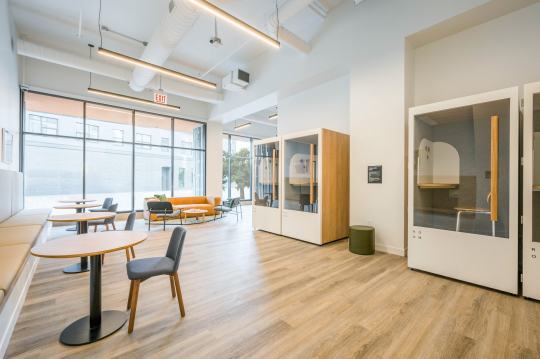
Millennium Park
Millennium Park is an iconic public space in downtown Chicago, IL. Opened in 2004, it spans 24.5 acres and offers a dynamic blend of art, architecture, and green spaces. Here, visitors can find the famous Cloud Gate sculpture, often called "The Bean," and the Jay Pritzker Pavilion, an outdoor concert platform designed by Frank Gehry. Lush gardens, interactive fountains, and the Crown Fountain featuring video art are prominent features. The park hosts various events, from concerts and festivals to outdoor exhibitions. Millennium Park's innovative design, cultural attractions, and immersive experiences make it a vibrant and cherished destination for residents and visitors.
Illinois' Pritzker Signs Food Desert Bill
Food deserts are areas in Chicago, IL, where residents, often in low-income neighborhoods, lack convenient access to affordable and nutritious food. These neighborhoods are characterized by a scarcity of grocery stores, farmers' markets, and fresh food options. Instead, residents rely on convenience stores and fast-food outlets for sustenance, leading to limited choices and poorer diet quality. Food deserts contribute to health disparities, as inadequate access to fresh fruits, vegetables, and other essential foods can lead to diet-related diseases like obesity and diabetes. Efforts to address food deserts include community initiatives, urban agriculture projects, and incentives for grocery store development, aiming to provide equitable access to healthy foods for all Chicagoans.
Link to maps
Millennium Park 201 E Randolph St, Chicago, IL 60602, United States Get on US-41 N/US Hwy 41 N from E Randolph St 2 min (0.6 mi) Continue on US-41 N/US Hwy 41 N to Chicago 11 min (3.5 mi) Turn left onto N Dayton St Destination will be on the right 1 min (0.2 mi) Post Chicago 853 W Blackhawk St, Chicago, IL 60642, United States
0 notes
Text
a personal reflection on decolonization
riel s. | december, 2022
Tansii kiiya (hello, how are you?) my name is riel starr and I am a Red River Michif artist and academic. my history on his land begins thousands of years ago among the peoples of the great plains, and my written history begins in the late 1600s with my first French ancestors and their unnamed first nations wives. my first First Nations ancestor is an unnamed woman referred to in my grandmother’s family tree as “Cree Woman”. I am Red River Métis on my mother’s side. Our historic Métis family names are Berthelet, Caron, St. Germaine, Dazé, Larivière and Dubois, and we come from the communities of Point à Grouette (now called St. Agathe), St. Norbert, and St. Vital (now modern-day Winnipeg) as well as the historic Batoche, Saskatchewan. My Berthelet ancestors were notable community leaders in Pointe à Grouette and my Caron ancestors including my fifth great uncle jean caron sr. fought in the North West resistance of 1885 at the battle of Duck Lake when he was fifty-two years old. Jean Caron Sr’s house is now a historic site in Batoche. As for myself my mother is a Métis educator and academic and my father is a settler archaeologist-turned-locksmith. I introduce myself in this way, the traditional way of Métis writers to contextualize my family, my knowledge and experiences, as well as my place on this land.
Natually, my native mother and my settler archaeologist father never married and split before I was old enough to form any memories. Museums and history have always been a fascination to me; the Royal Terrell Museum in Drumheller, which I dubbed “the dead dinosaur museum” and the Royal Alberta Museum which I called “the dead mouse museum” after my favourite display. The display was a larger-than-life diorama of a mouse, it’s intestines showing, the organisms that helped decompose the corpse were also displayed, massive daddy long legs, gigantic ants, worms thicker than my arm. The RAM is an interesting place. A few years ago, it was moved into a new building downtown and I could no longer spend hours finding fossils in the limestone exterior of the original museum. The place had changed drastically. As I reminisce on what I loved about the RAM I realize that all the things I disliked were their representations of Indigenous people; the uncanny wax figures with placid skin that did not resemble a single Native person’s skin that I had met. and the artwork they portrayed as artifacts. What makes a beaded bag so different from a Van Dyck if they’re the same age? And honoured the same amount by the people who made them?
Another place of importance growing up was Fort Edmonton Park. Like Heritage Park, Fort Edmonton has costumed interpreters, who teach visitors history as if the interpreters were of that time. In the summer of 2017, my lifelong dream came true, and I became a volunteer costumed interpreter with my mentor Sheldon Stockdale, another Métis person, and we were able to teach our history in the way we felt was right, something deeply important to the Métis people. An experience we had that stands out vividly is working on Fort Edmonton’s 1920 Street, and educating visitors on the history of pemmican, a sort of ancient protein bar made from berries, dried meat, and animal fat. Pemmican was a staple of survival for the Métis, and we were asking visitors to help us in redesigning the packaging for the bar. The historic package had a representation of an Indigenous person on it, a caricature of a race. We asked visitors if turning Indigenous people into mascots should be accepted, and sadly many people didn’t see the problem. Sheldon and I borderline argued with a man who seemed to see no problem in reducing us, the people speaking to him, to caricatures. In a similar vein, someone once gave me Chicago Blackhawk’s stickers when i was six, and not knowing a thing about hockey I asked my mother who the stickers were of. I’m guessing my mother did not want to explain the history of colonization and caricatures of Indigenous people, so she dismissed my question by telling me that the man in the tacky illustration was my ancestor.
Decolonizing art history seems like an impossible task, and perhaps it is. You cannot separate someone like Emily Carr from art history in Canada, however you can change the way you teach her work. Perhaps decolonizing art history means recognizing the ways in which “art history” as a field of study is deeply Euro-centric, and how the way of teaching this history is the same. I took my first semester at AUArts in the fall of 2020 after transferring from MacEwan after completing a two-year diploma at MacEwan University. I had a sculpture class a media arts class an art history class. The more I consider how to decolonize our history the more I understand that it is not the history that can be decolonized, it is the way we are teaching said history. It is the way that so much of our education is taught to us through a colonial lens, rather than a multifaceted history with a multitude of perspectives and peoples contributing until an entire picture is formed.
In the fall of 2020 in my media arts class my professor Kurtis Lesick was discussing an artist, a black artist who had him and others participate in a performance in which in that space the black artist allowed the participants to say the N-word. Rather than describing the piece in the way I just did removing the slur, Kurtis Lesick made the conscious decision to say the N- word twice. A person I had once thought to be an ally of mine, who knew the language of decolonization. Earlier this year a classmate in this class who was also in my sculpture class in the winter of 2022 told me that ‘knowing me has made her a better person’, this woman does not know me, and I do not know her, but I knew her in that moment. I knew that she wanted me to absolve her of her settler guilt. White settlers love referencing Tuck and Yang’s Decolonization Is Not a Metaphor but sometimes I wonder if they truly understand that it is simply not enough to know the language of decolonization, that you must be actively anti-colonial in a field that is built on colonization.
I spent a lot of time at Fort Calgary this semester for my FINA class, critiquing their exhibitions wondering how they can be improved if they can be improved, and I learned that given their budget that it is not possible. Fort Calgary, like other institutions cannot afford to replace their current exhibits and entirely redesign the way they teach history. What they can do is acknowledge the missing pieces, they can acknowledge the gaps they can acknowledge the fact that there’s more than one canon of history. Sometimes I wonder if the mosaic of history is too complex to decolonize; knowing that we will never return to a world like the one that existed pre-colonization. I think about my one classmate who tokenizes me, who knows how to use decolonial language to appear one way, but who never puts those concepts into practice. I think about the settlers who think that decolonization is re-colonizing the Americas but with “the Indians” in charge this time.
I now understand that decolonizing art history cannot happen without first decolonizing institutions. I have learned that we cannot forget that we once taught art history in an i way we cannot forget the way colonization has infiltrated every aspect of the education system down to the teaching styles of each professor. if we forget how colonial art history is in the first place, we will forget why we need to decolonize. Considering the hand that art history is hard in colonization around the world, I consider about the way southeast Asian women’s bodies are talked about in my textbooks versus European odalisque paintings. Brown people’s bodies were inherently sexualized and seen as dirty, while white people’s bodies were adored and deemed Classical.
Maybe colonization is another movement in the worldwide canon of art history. Another period in the bar graph of history- as google images seems to see art history. Perhaps Emily Carr and Paul Gauguin are the faces of this genre. Just as colonization cannot be forgotten among its victims, it cannot be forgotten by its perpetrators, who still believe they are a superior culture and race. Genres of literature such as post-colonial writing from India and Sri Lanka may suggest, there was a period of colonial art and literature, perhaps it is ongoing, possibly dying out, maybe here to stay. There will always be an antithesis, an attempt to view art and art history from a different perspective, and that is how we can decolonize art history.
0 notes